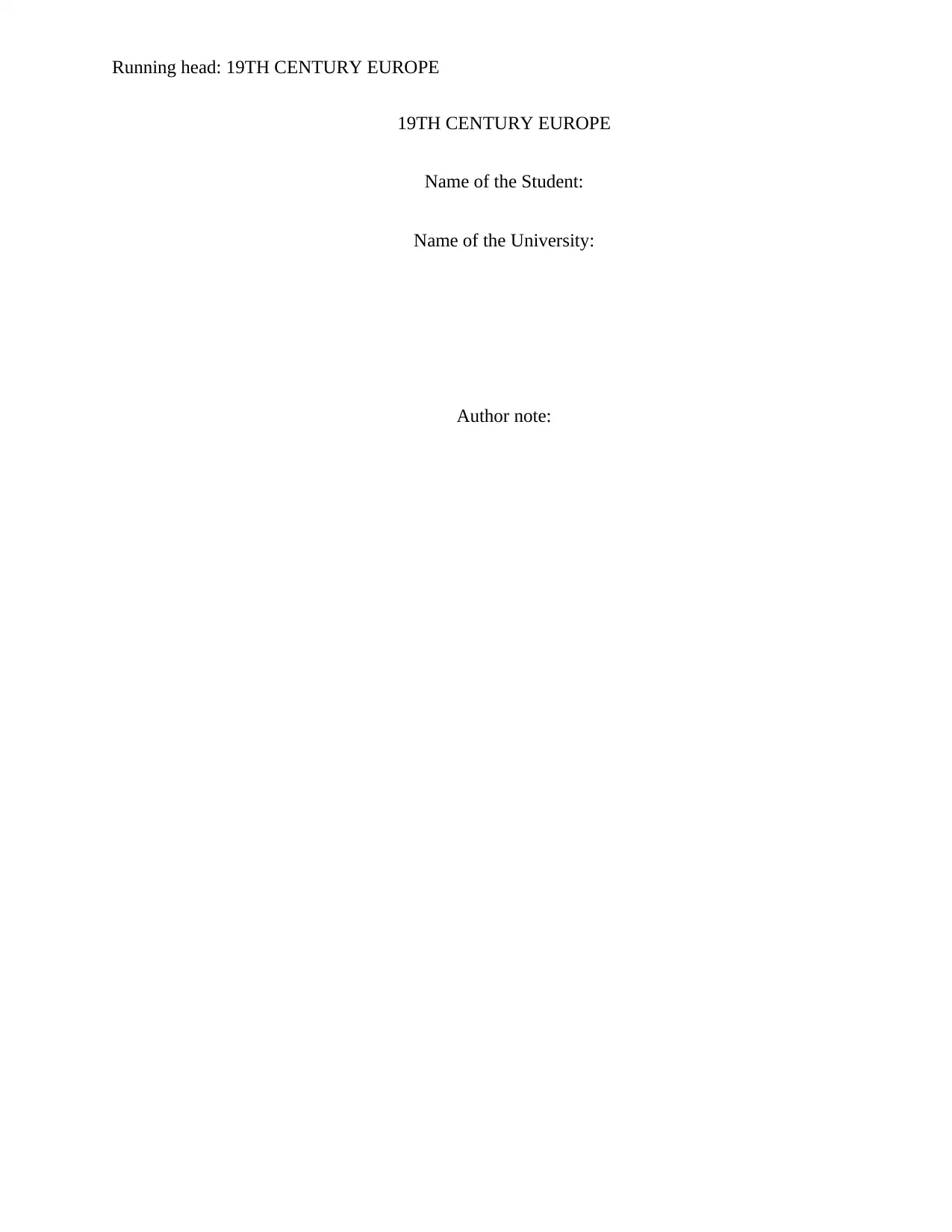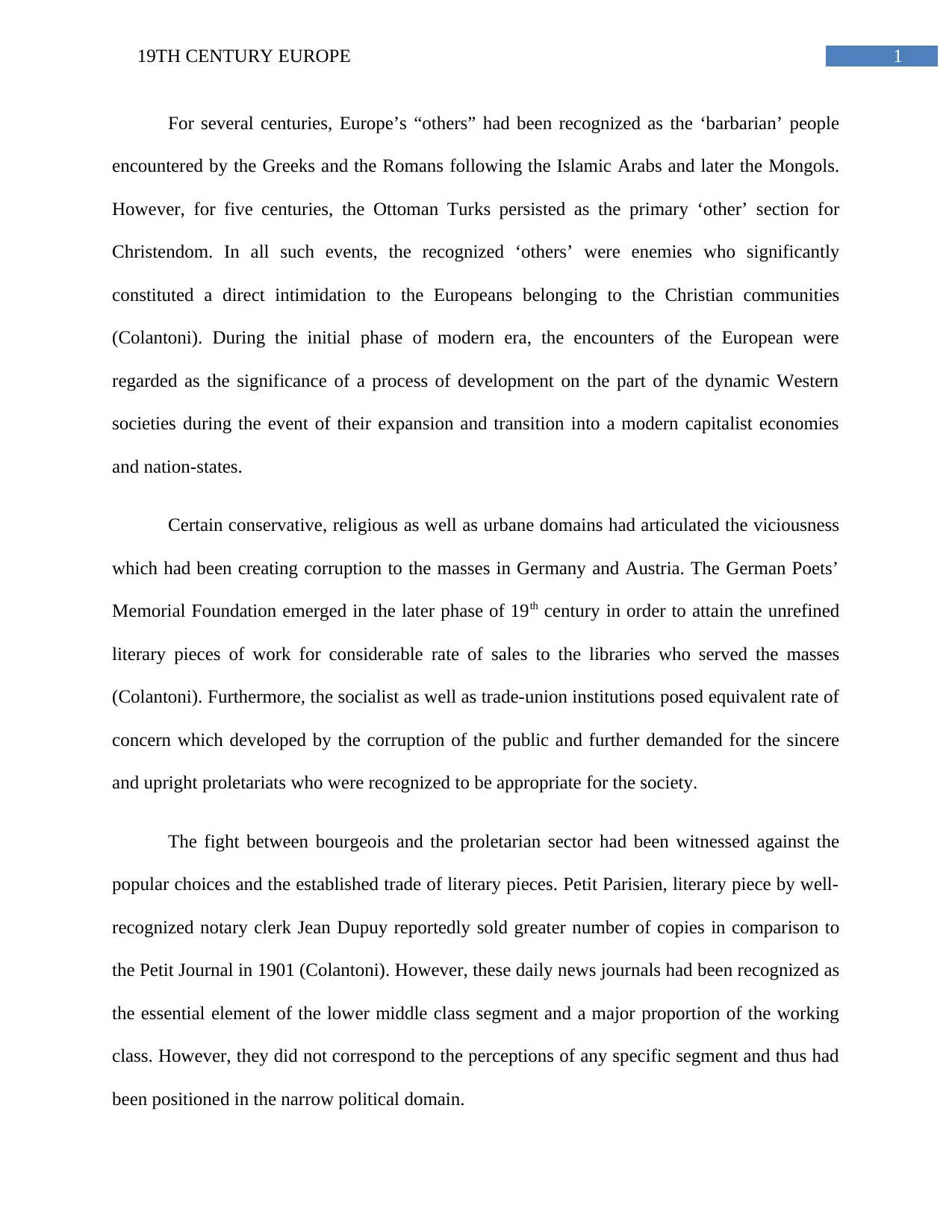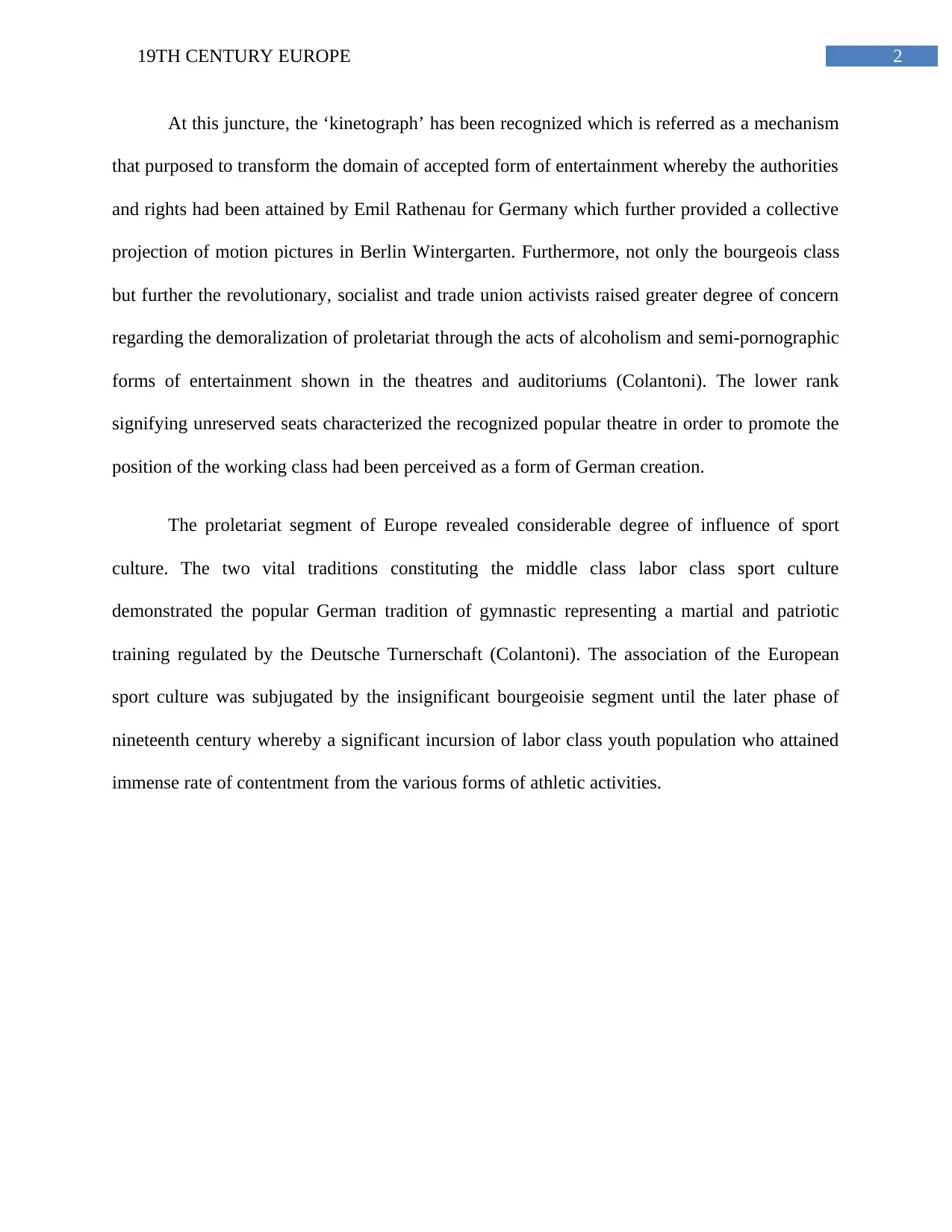Social and Cultural Dynamics: Examining 19th Century European Society
VerifiedAdded on 2023/06/10
|4
|662
|153
Essay
AI Summary
This essay provides an overview of the social and cultural transformations in 19th century Europe. It discusses how Europeans perceived 'others' and the internal social dynamics influenced by industrialization and emerging social classes. The essay highlights concerns about public morality, the rise of popular entertainment like kinetographs, and the impact of sports culture, particularly the German gymnastic tradition, on both the middle and working classes. It also touches upon the conflict between bourgeois and proletarian values, as well as the role of popular media like newspapers in shaping public opinion. The analysis draws upon historical context to illustrate the complex interplay of societal forces during this period. Desklib offers a wide range of past papers and solved assignments to aid students in their studies.
1 out of 4





![[object Object]](/_next/static/media/star-bottom.7253800d.svg)